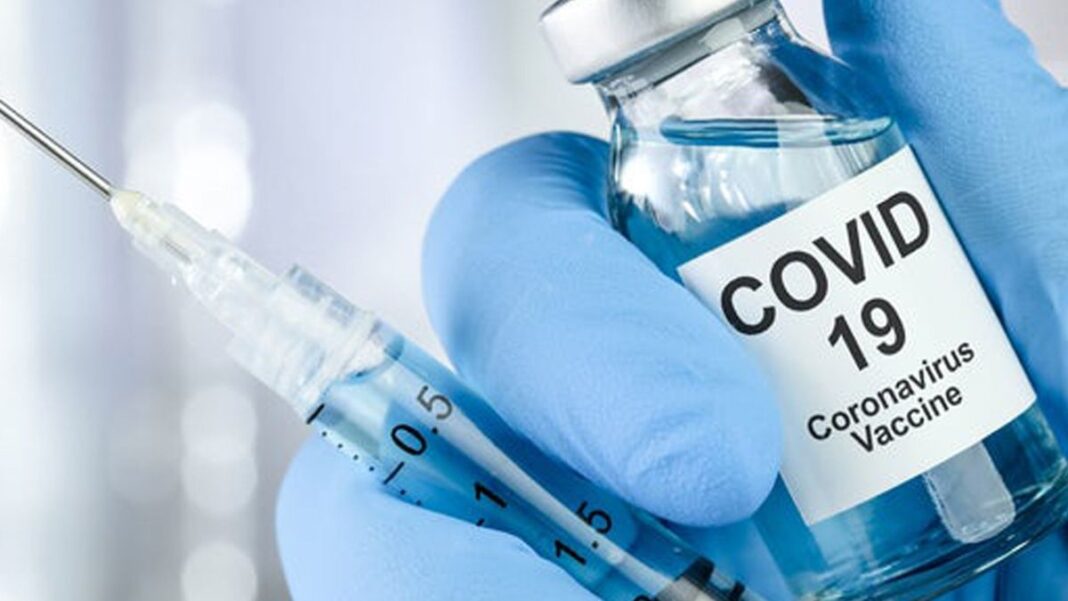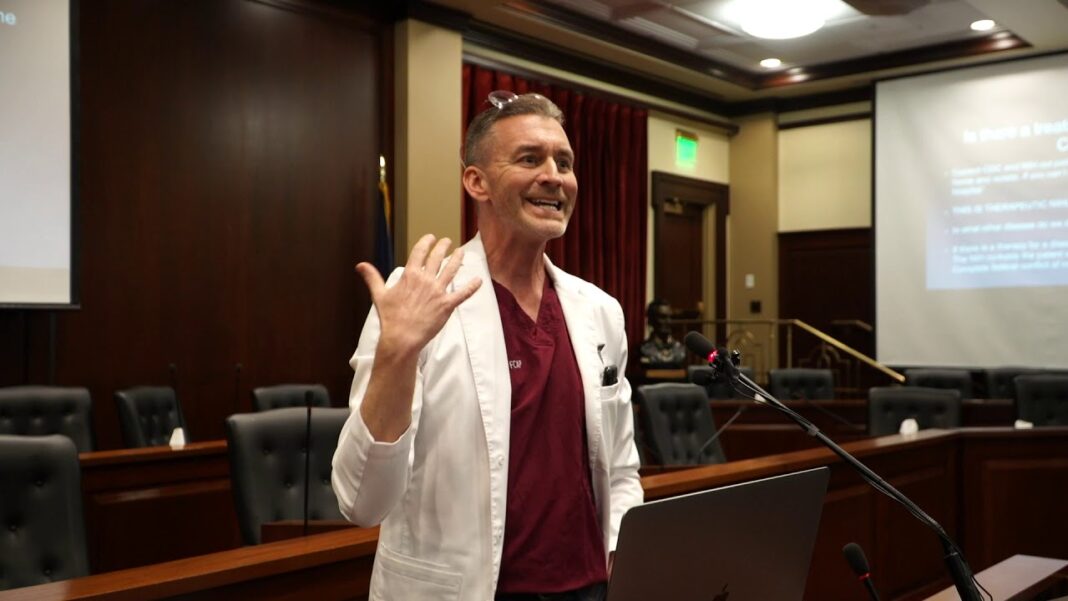mRNA brought us a Covid-19 vaccine in record speed. Next it could tackle flu, malaria or HIV
NO ONE EXPECTED the first Covid-19 vaccine to be as good as it was. “We were hoping for around 70 per cent, that’s a success,” says Dr Ann Falsey, a professor of medicine at the University of Rochester, New York, who ran a 150-person trial site for the Pfizer-BioNTech vaccine in 2020.
Even Uğur Şahin, the co-founder and CEO of BioNTech, who had shepherded the drug from its earliest stages, had some doubts. All the preliminary laboratory tests looked good; since he saw them in June, he would routinely tell people that “immunologically, this is a near-perfect vaccine.” But that doesn’t always mean it will work against “the beast, the thing out there” in the real world. It wasn’t until November 9, 2020, three months into the final clinical trial, that he finally got the good news. “More than 90 per cent effective,” he says. “I knew this was a game changer. We have a vaccine.”
“We were overjoyed,” Falsey says. “It seemed too good to be true. No respiratory vaccine has ever had that kind of efficacy.”
The arrival of a vaccine before the close of the year was an unexpected turn of events. Early in the pandemic, the conventional wisdom was that, even with all the stops pulled, a vaccine would take at least a year and a half to develop. Talking heads often referenced that the previous fastest-ever vaccine developed, for mumps back in 1967, took four years. Modern vaccines often stretch out past a decade of development. BioNTech – and US-based Moderna, which announced similar results later the same week – shattered that conventional timeline.
Neither company was a household name before the pandemic. In fact, neither had ever had a single drug approved before. But both had long believed that their mRNA technology, which uses simple genetic instructions as a payload, could outpace traditional vaccines, which rely on the often-painstaking assembly of living viruses or their isolated parts. mRNA turned out to be a vanishingly rare thing in the world of science and medicine: a promising and potentially transformative technology that not only survived its first big test, but delivered beyond most people’s wildest expectations.
But its next step could be even bigger. The scope of mRNA vaccines always went beyond any one disease. Like moving from a vacuum tube to a microchip, the technology promises to perform the same task as traditional vaccines, but exponentially faster, and for a fraction of the cost. “You can have an idea in the morning, and a vaccine prototype by evening. The speed is amazing,” says Daniel Anderson, an mRNA therapy researcher at MIT. Before the pandemic, charities including the Bill & Melinda Gates Foundation and the Coalition for Epidemic Preparedness Innovations (CEPI) hoped to turn mRNA on deadly diseases that the pharmaceutical industry has largely ignored, such as dengue or Lassa fever, while industry saw a chance to speed up the quest for long-held scientific dreams: an improved flu shot, or the first effective HIV vaccine.
Amesh Adalja, an expert on emerging diseases at the Johns Hopkins Center for Health Security, in Maryland, says mRNA could “make all these applications we were hoping for, pushing for, become part of everyday life.”
“When they write the history of vaccines, this will probably be a turning point,” he adds.
While the world remains focused on the rollout of Covid-19 vaccines, the race for the next generation of mRNA vaccines – targeted at a variety of other diseases – is already exploding. Moderna and BioNTech each have nine candidates in development or early clinical trials. There are at least six mRNA vaccines against flu in the pipeline, and a similar number against HIV. Nipah, Zika, herpes, dengue, hepatitis and malaria have all been announced. The field sometimes resembles the early stage of a gold rush, as pharma giants snap up promising researchers for huge contracts – Sanofi recently paid $425 million (£307m) to partner with a small American mRNA biotech called Translate Bio, while GSK paid $294 million (£212m) to work with Germany’s CureVac.
“Biotech generally doesn’t have as much disruption as the computer tech industry – development times are long, it’s heavily regulated. So you can usually see change coming,” says Hartaj Singh, an industry analyst with Oppenheimer & Co. “Covid turned that on its head; mRNA vaccines quickly came out as the big winner. Lots of older vaccine platforms will be gone – replaced – in a few years, or at least greatly diminished.”
Şahin would go further. “It will be transformative, there’s no question. It will be absolutely transformative. Many older vaccine platforms will not survive.” But, he says, the impact will go beyond what we already know. “There are so many more things we can do. This is not just a replacement; we will be coming up with other new medical innovations that wouldn’t otherwise be possible.”
NOT EVERYONE WAS so surprised that mRNA vaccines passed their first test with flying colours. Katalin Karikó, a Hungarian biochemist, started working with mRNA as early as 1989; her research at the University of Pennsylvania in the mid-2000s laid the foundation for both the BioNTech and Moderna vaccines (Karikó now oversees RNA pharmaceuticals for BioNTech as a senior vice president). When I ask about her take on the past year, she is characteristically blunt. “There was no nail biting. I expected the vaccines to be very potent,” she says.
Even in lockdown, Karikó is one of the nerve centres of the mRNA world. From her home outside Philadelphia she advises BioNTech’s scientists in Germany, and still works with former academic colleagues at nearby Penn State. She is an inveterate scientist, peppering conversations with references in academic format – name, experiment, year – and constantly looking to the next frontier. She is deeply impressed with the scale of the vaccine rollout (“the manufacturing, incredible scale, 200 million people injected already”). But she seems almost impatient with how long it took people to come around to her fascination with mRNA. The science always said it would “work like a charm”, she says, rattling off small-scale studies from the past two decades.
The concept behind mRNA as a drug is strikingly simple: it is the molecule that your own cells use to carry instructions from your genes, written in a simple four-letter chemical language. If you can synthesize it in a lab and deliver it to cells, you can theoretically tell them to make a specific tool – a viral antigen, or a cancer-blocking molecule, or more heart tissue – all in their own language. Moderna has taken to calling mRNA therapies the “software of life”, or an “operating system” for medicine.
But, like so many other theoretically attractive propositions in science, it was stacked with practical problems. The body violently rejects RNA from outside sources – probably to avoid being hijacked by viruses and other pathogens – and often the RNA proved so toxic that it killed the lab animals it was tested on. “We couldn’t dream of using it on humans,” Karikó says. For years, this was such a major obstacle that few scientists even considered using it for vaccines. “It was so theoretical at that time, no-one was really doing this stuff,” Dr David Scales, an assistant professor of medicine at Cornell University who worked with Karikó as a student, says.
Working with the immunologist Drew Weissman at the University of Pennsylvania in the early 2000s, Karikó engineered synthetic mRNA molecules that could avoid the body’s defenses. It was a painstaking process that, Weissman says, killed a lot of mice before they finally found the successful formula. But in 2004, one of her constructs worked. In effect, this opened the lines of communication between our cells and mRNA messages created by scientists.
Karikó always believed mRNA could do anything. “For years I was going to scientific meetings and approaching people to say, ‘What are you working on? Maybe this RNA technology could help’ – whatever it was, a disease, baldness even. They probably all thought I was crazy,” she says, laughing.
“She was so passionate about the things that RNA could do,” Scales says. “She was an evangelist and a translator. She helped you think about all the possibilities.”
Nearly 20 years later, the vaccines enabled by her work have turned Karikó into a scientific celebrity. That bit, she says, “does make me nervous.” Both Moderna co-founder Derrick Rossi and the British biologist Richard Dawkins have suggested she should be considered for the Nobel Prize. This is nice, she says, although the constant requests for interviews encroach on her work. And more important than any plaudits is the fact that thousands of scientists have now come around to her way of thinking.
Unlike the early days of mRNA research, we won’t be waiting decades for its next big test. The pandemic has put it in the spotlight, and scientists are eager to find out if its success against coronavirus can be replicated.
THE NEXT BIG mRNA vaccine breakthrough probably won’t be against another exotic new disease, but a very familiar one. “Flu is the number one target,” Falsey says. A disease that most people consider under control, influenza still kills over 300,000 people worldwide most years. This is despite more than one billion yearly flu shots. “The vaccines aren’t as effective as we want them to be,” she says.
That may be putting it mildly. According to the Centers for Disease Control and Prevention (CDC), which tracks the efficacy of the vaccine in the US every year, they rarely achieve even 50 per cent protection. For the 2018-2019 flu season it was just 29 per cent; some years it is as low as ten per cent. Scientific papers, not usually prone to expressive language, often refer to an improved flu vaccine as the “holy grail” of the field.
One scientist chasing that dream is Norbert Pardi, who works in Katalin Karikó’s old department at the University of Pennsylvania, where he was recruited by Karikó in 2011. (He is also from Hungary, and proudly shows me a black-and-white picture of his grandfather alongside Karikó’s father in a small-town butcher shop.) Since the BioNTech results in November, the lab’s phone has been ringing off the hook. “Companies, academics, they wanted to talk. Wanted to know all about these RNA vaccines,” Pardi says. But his main project, stretching back to before the coronavirus pandemic, targets flu. “The seasonal vaccine simply isn’t very good; we can make a better one.”
The problem with current flu vaccines lies in the mismatch between the elusive nature of the influenza virus and the rather antiquated and slow method we use to make a vaccine against it – a process mRNA seems tailor-made to replace. The illness we call flu is caused by several different species of the influenza virus, and each species is highly mutable (meaning it can change very rapidly). This means a new vaccine is required each year against the deadliest strains, and even as the vaccine is being made, the virus continues mutating. The former head of vaccination for the CDC, Bruce Gellin, calls it a “moving target”, and says a vaccine that is a good match early in the year might be evaded a few months later.
Read Full Article on Wired.co.uk







